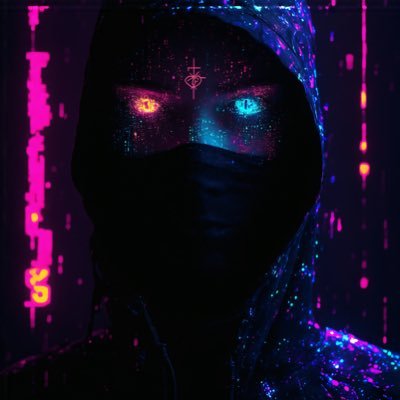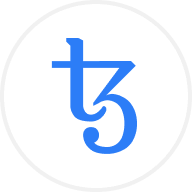Decentraland è un Metaverso 3D vivo e pulsante, immersivo costruito sulla blockchain di Ethereum. L'obiettivo principale di Decentaland è quello di fornire un mondo virtuale completamente decentralizzato in cui gli utenti possano socializzare, imparare e monetizzare varie attività in un universo autonomo.
Lo utility token nativo di Decentraland, MANA, è la spina dorsale dell'economia di Decentraland. Il token è utilizzato come valuta primaria di scambio, il che lo rende prezioso per i giocatori e contribuisce a sostenere il prezzo di MANA. MANA è un token ERC-20 necessario per acquistare avatar di personaggi e indossabili, token non fungibili (NFT) di LAND e può anche essere utilizzato per pagare altri beni e servizi nel mondo di Decentraland.
L'altro token integrale dell'ecosistema Decentraland è LAND. I token LAND sono NFT che rappresentano la proprietà di un giocatore su aree all'interno del metaverso di Decentraland. Le possibilità di proprietà immobiliari virtuali in Decentraland sono limitate solo dalla propria immaginazione. Alcuni giocatori scelgono di creare gallerie d'arte NFT sul loro terreno, mentre altri hanno monetizzato il loro terreno costruendo casinò virtuali dove i giocatori possono vincere MANA.
La domanda e la crescita dei giocatori di Decentraland ne determinano il prezzo. Per questo motivo, il grafico di MANA si muove spesso in correlazione con altre criptovalute incentrate sul gioco e sul metaverso.
Come funziona Decentraland?
La blockchain di Ethereum alimenta Decentraland. In altre parole, sfrutta la natura distribuita e trasparente di Ethereum per alimentare un metaverso decentralizzato. Questo significa che gli utenti possiedono e gestiscono il mondo virtuale e i suoi beni digitali.
Inoltre, Decentraland impiega un'architettura a più livelli per garantire che lo spazio virtuale sia sicuro, interattivo e componibile. La piattaforma, in particolare, si compone di tre livelli infrastrutturali, che sono i seguenti:
Il livello di consenso
Questo livello crea e mantiene un registro o libro mastro in cui viene registrata la proprietà dei token LAND. Il protocollo lo utilizza per tracciare la proprietà degli immobili digitali su Decentraland.
Il livello dei contenuti
Il secondo livello di Decentraland controlla le attività su ogni appezzamento di terreno. Ciò si ottiene abilitando un sistema di archiviazione distribuito per i file necessari al rendering dei contenuti sugli appezzamenti virtuali. Per eseguire il rendering di un oggetto su Decentraland, la sua descrizione deve includere i file di contenuto che fanno riferimento alla texture, alle mesh 3D e al suono.
Anche il punto di ingresso dello scripting e la definizione delle interazioni peer-to-peer (P2P) sono file necessari. Il primo si riferisce ai dati necessari per stabilire la posizione, l'interazione, il comportamento e il movimento degli oggetti 3D. Il secondo, invece, si riferisce alla connessione al server necessaria per avviare le interazioni P2P, come gesti, posizioni, chat vocali e messaggistica.
Livello in tempo reale
La connessione distribuita al server viene stabilita nell'ultimo livello architettonico per consentire le interazioni sociali, comprese quelle da utente a utente e da utente ad applicazione.
Una volta realizzate tutte queste infrastrutture, gli utenti potevano creare avatar su Decentraland, acquistare terreni e costruirci sopra. Su questi terreni possono essere costruiti casinò, locali notturni, musei, saloni e altre strutture.
È possibile controllare il modo in cui gli altri utenti interagiscono con questi terreni dopo aver costruito applicazioni o scene su di essi. È possibile, ad esempio, addebitare una tariffa ogni volta che gli altri utenti richiedono l'accesso a un servizio fornito dalla proprietà. Se la costruzione di applicazioni non è il vostro forte, potete affittare il vostro terreno a pagamento. In generale, ci si aspetta che il terreno digitale venga gestito come si farebbe con una proprietà fisica.
Decentraland ha fornito strumenti di Builder facili da usare, sapendo che i requisiti di codifica per la creazione di applicazioni digitali da zero possono essere troppo complessi. Gli utenti possono utilizzarli per creare applicazioni e scene su Decentraland utilizzando un sistema drag-and-drop. Il mercato, dove è possibile vendere o acquistare LAND, oggetti indossabili, nomi e altri beni di gioco, è un'altra componente essenziale dell'ecosistema di Decentraland.
Prezzo di MANA e tokenomics
Il token MANA ha un'offerta totale di 2.193.539.027 monete, secondo i dati di CoinMarketCap. Circa 1,86 miliardi di token MANA sono attualmente in circolazione. Il 18 agosto 2017, il team di Decentraland ha tenuto una vendita privata di token in cui sono stati raccolti 25 milioni di dollari USA in ETH. I token MANA sono stati distribuiti a varie parti dalla fornitura iniziale nelle seguenti distribuzioni:
- Il 40% è stato assegnato agli investitori della vendita privata.
- Il 20% è stato destinato alla Fondazione Decentraland.
- Il 20% è stato assegnato al team di sviluppo.
- Il 20% è stato destinato alla riserva comunitaria.
MANA utilizza un meccanismo di deflazione per mantenere la scarsità e sostenere il prezzo di Decentraland. Quando il TERRENO viene scambiato in MANA sul marketplace di Decentraland, una commissione del 2,5% viene dedotta dalla transazione. Questa commissione viene poi bruciata, rimuovendola di fatto dall'offerta totale di MANA.
Chi sono i fondatori
Ariel Meilich ed Esteban Ordano hanno fondato Decentraland alla fine del 2017. Meilich è un imprenditore esperto che ha precedentemente fondato una serie di startup diverse. È stato anche un ex analista presso un rinomato fondo di venture capital della Silicon Valley, Charles River Ventures.
Ordano proviene da un background più tecnico, avendo ricoperto in passato posizioni come ingegnere software presso importanti aziende di criptovalute come BitPay. Prima di fondare Decentraland, Ordano è stato consulente per il progetto Matic e ha gestito la propria agenzia di sviluppo di smart contract.
Mentre entrambi i fondatori hanno lasciato il loro ruolo in Decentraland, lo sviluppo del progetto Decentraland è in corso. Nel vero spirito della tecnologia blockchain, lo sviluppo del progetto è supervisionato dalla Fondazione autonoma Decentraland.
Decentraland si è posizionata nel corso degli anni per diventare un leader di mercato nella sfera delle criptovalute e allo stesso tempo per fare breccia nell'economia tradizionale. Ciò è evidente nella recente ondata di partnership dell'ecosistema. Ad esempio, nel dicembre 2021, Decentraland ha stretto una partnership con la superstar del basket Stephen Curry e con Under Armour, l'azienda di moda sportiva che produce le scarpe firmate da Curry. Nello stesso mese, Decentraland ha anche annunciato una collaborazione con il mercato del lusso UNXD per ospitare una sfilata di moda nel metaverso.
I punti salienti di Decentraland
Decentraland ha avuto molto successo con partnership di grande impatto. Ad esempio, il Ministero degli Affari Esteri delle Barbados ha annunciato l'intenzione di istituire ambasciate virtuali in diversi metaversi, tra cui Decentraland.
Inoltre, Steph Curry e Under Armour hanno stretto una partnership con Decentraland nel dicembre 2021. Samsung ha seguito l'esempio il 6 gennaio 2022, quando ha annunciato l'intenzione di costruire una versione digitale del suo flagship store di New York City su Decentraland.
Tennis Australia ha annunciato una partnership con Decentraland il 17 dello stesso mese, consentendo alla piattaforma VR di ospitare momenti conviviali virtuali degli Australian Open. Infine, un mese dopo JP Morgan ha aperto una lounge su Decentraland, diventando così la prima banca a lanciare un prodotto sul metaverso.



























Social